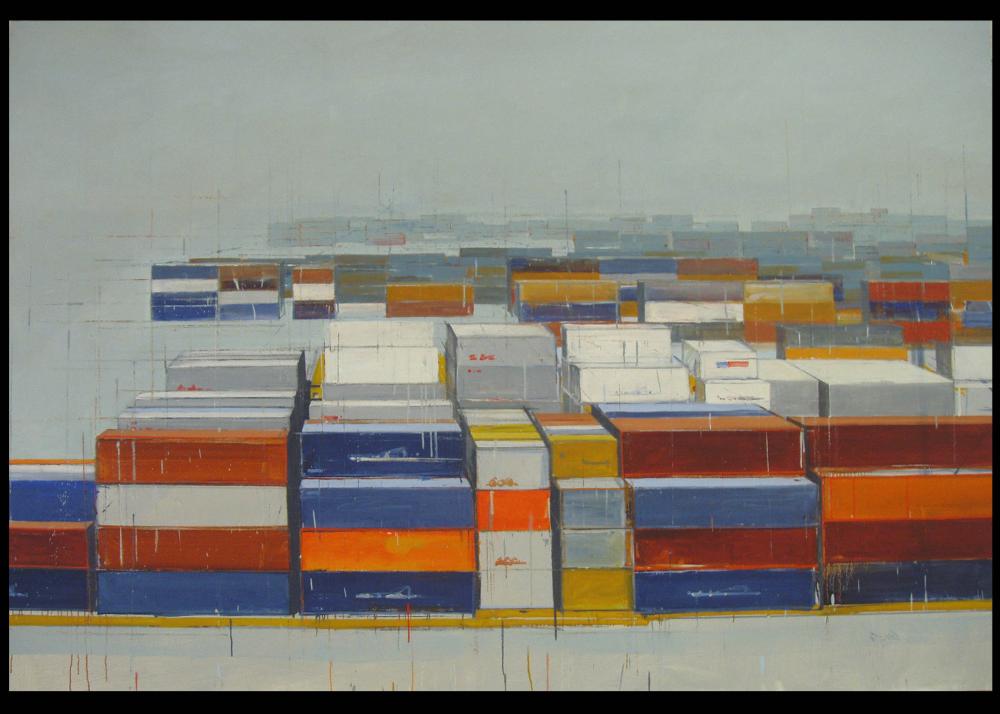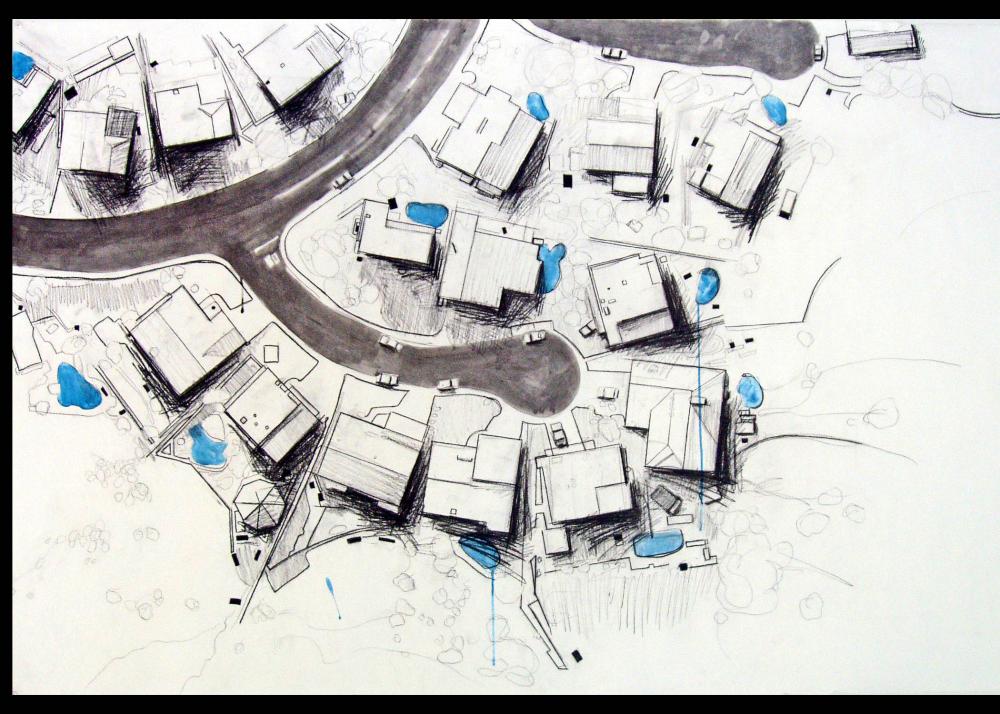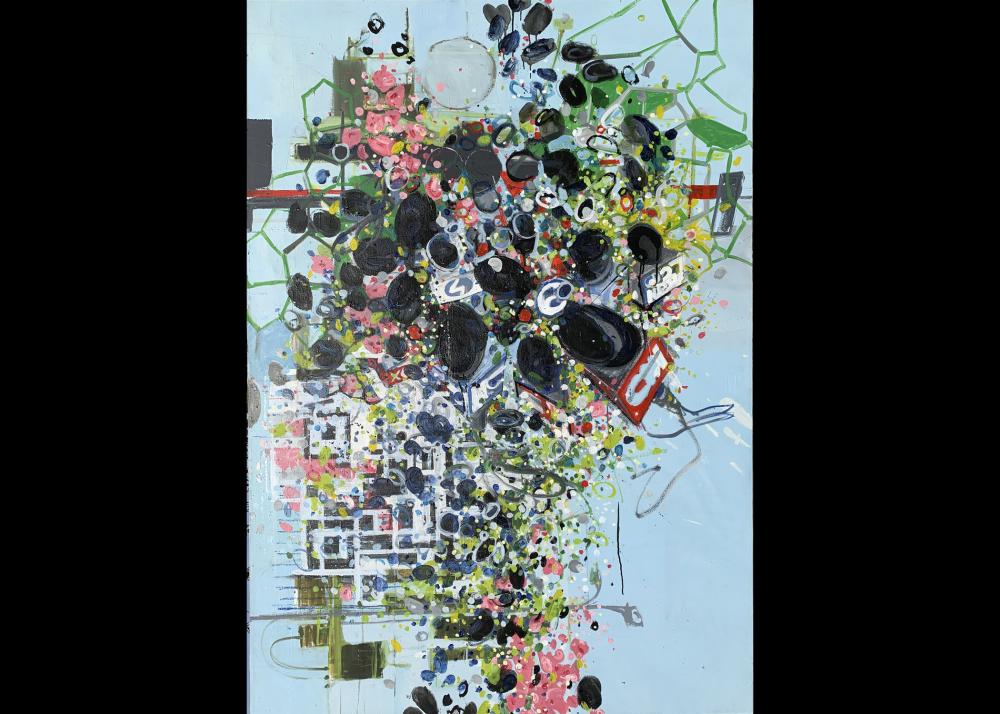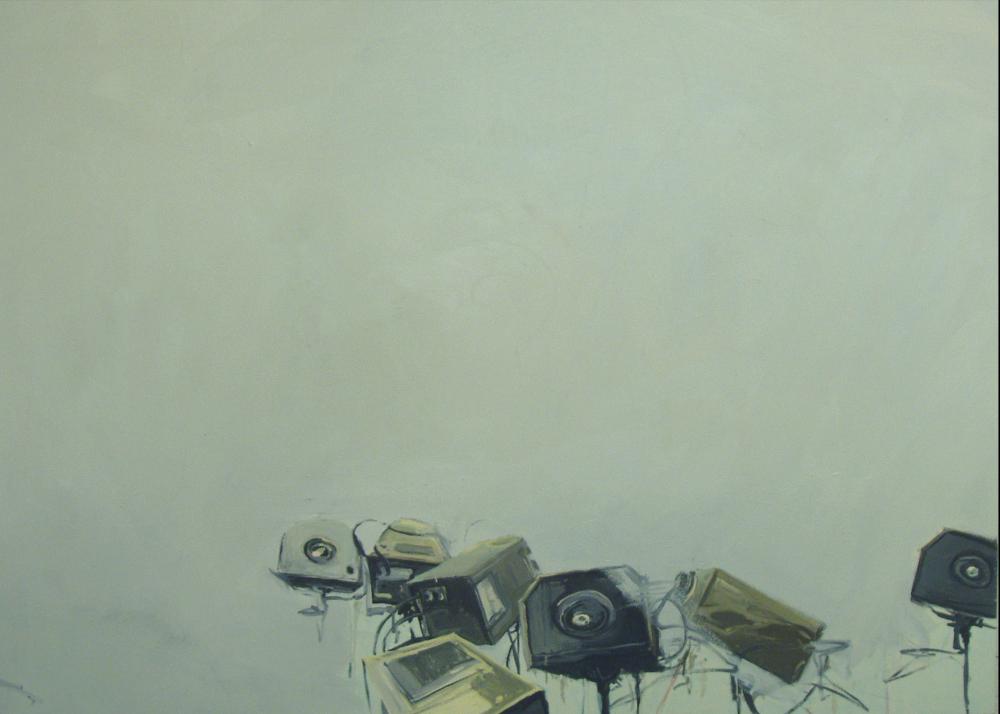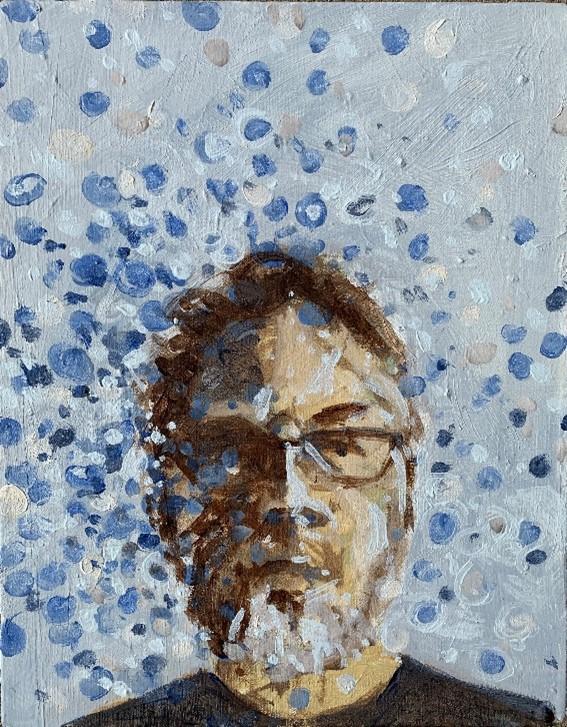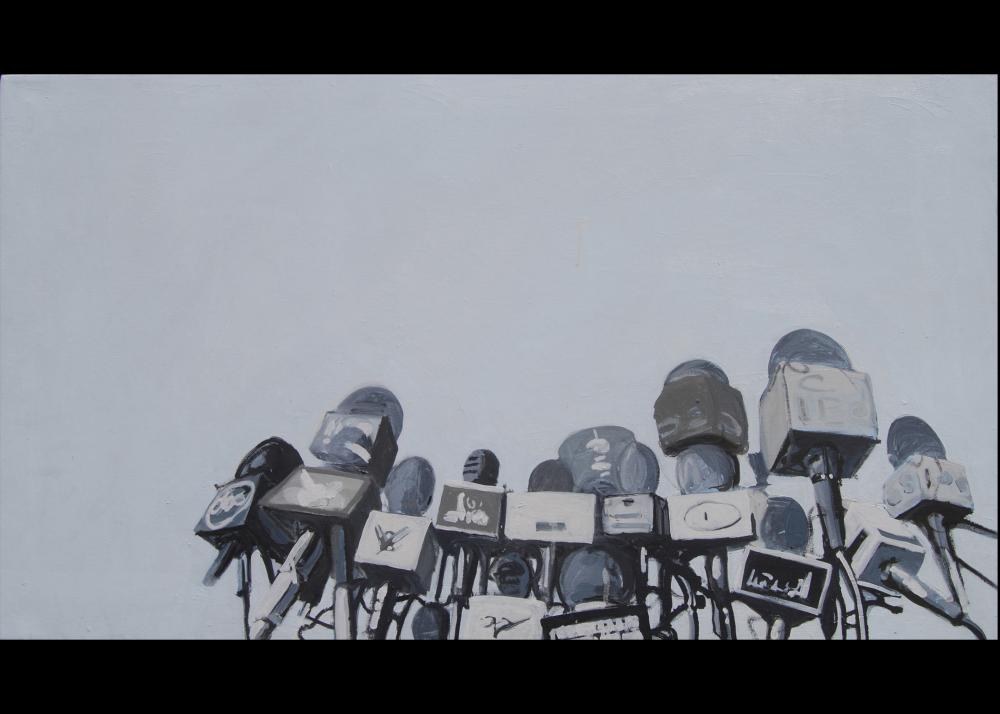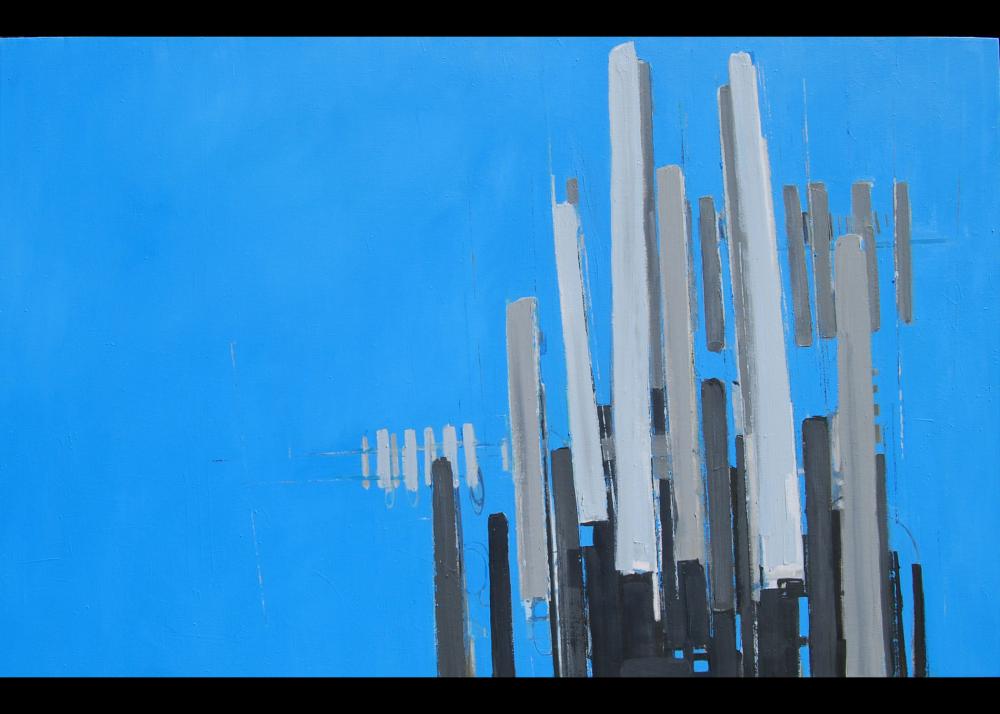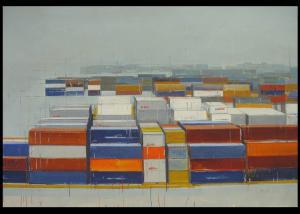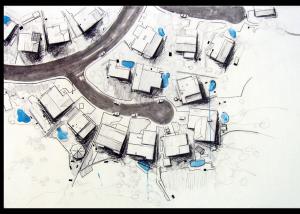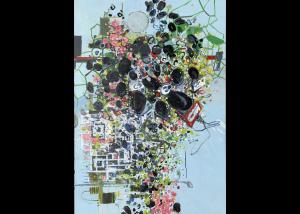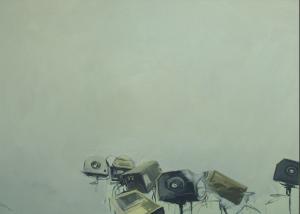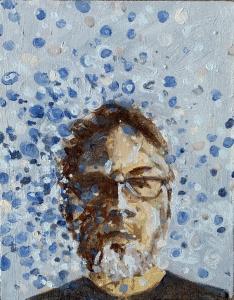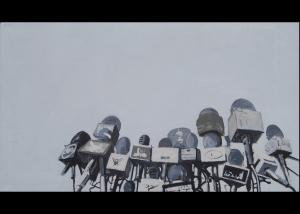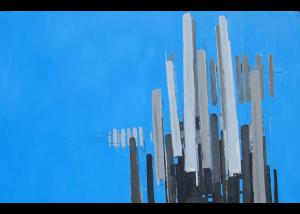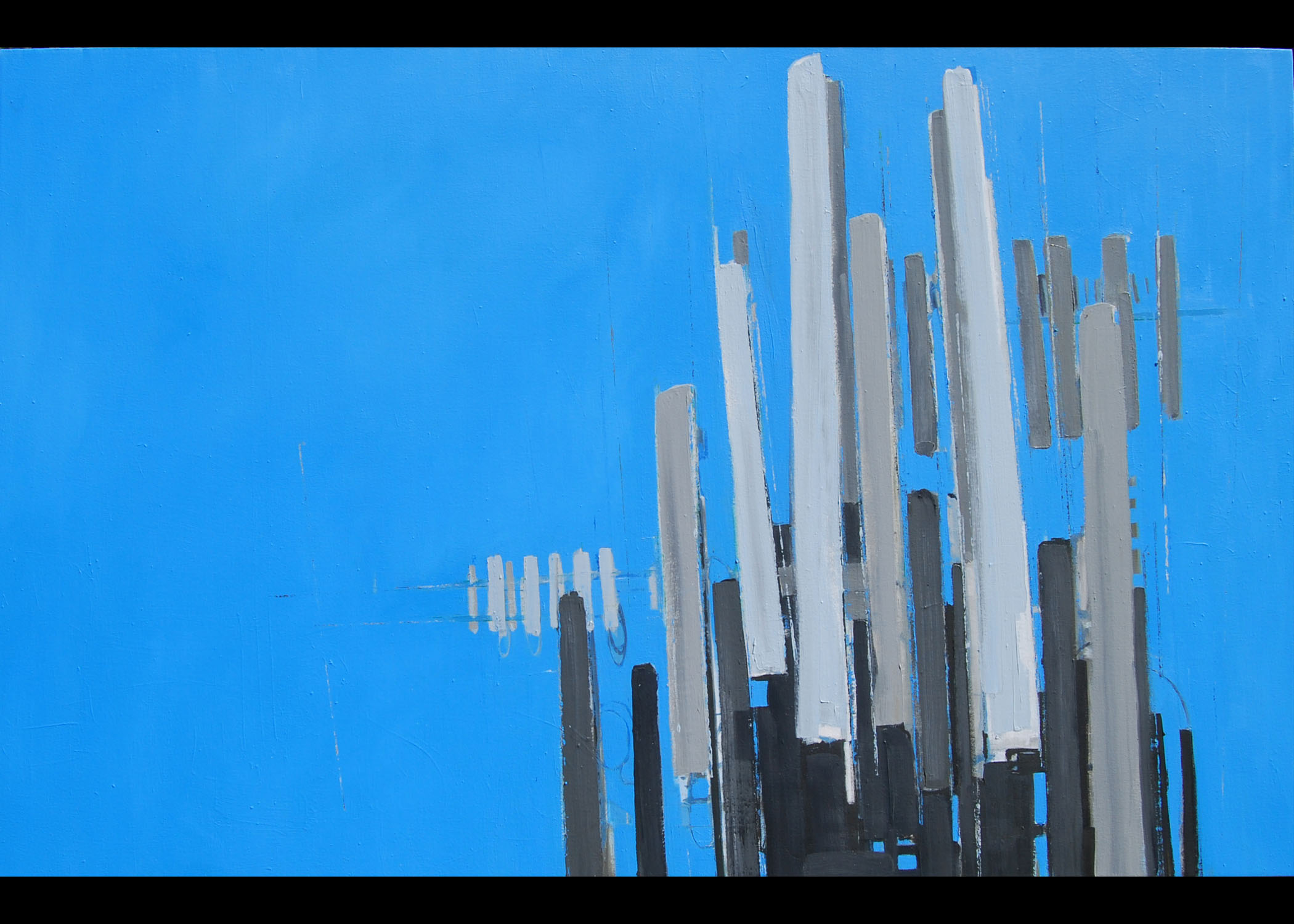
Invasive Species
By Matthew Cramer
My approach to landscape is motivated by a desire to represent our human imprint on the environment. I choose subjects that are common parts of our human infrastructure. I often work from my own photographs which is a practice I learned early in my life.
As a kid, my family took regular camping trips to southern Ohio or West Virginia. My dad is an avid model railroader who took pictures as reference, documentation, and souvenirs. We would venture into railroad yards, and seek out large bridges spanning deep valleys, and other train-related spots. I learned two practices from this. The first was how to find these places and sneak in. The second was the habit of carrying a camera and taking pictures of interesting oddities. This is also when I became interested in the infrastructure behind our society, places that are often bland, hidden, and unnatural alterations to the landscape.
I use photos taken at airports, power stations, and shipping yards, amongst other subjects, to create urban landscapes without people, yet representing people’s impact on the environment. I approach these malls, gas stations, office buildings, and parking garages as traditional urban landscapes, depicted in a vacuum. I juxtapose these man-made structures with titles that evoke nature.
As online technology made digital mapping system and satellite imagery accessible, I became interested in using these references to depict the landscape in a more factual way. This opened up an approach informed more by data than my own experience, allowing me to create abstract but factual images, focused on pattern and line. These satellite landscapes hold a voyeuristic approach, suggesting systems of surveillance and secrecy. I studied the Yucca Flat Nuclear site in Nevada, documenting the craters from testing and storage facilities. I explore a range of images, from the toxic and political aspects of humanity to more residential and suburban sites.
While approaching the landscape as a record of human activity, an iconography of symbols of human consumption and activity emerges: the shipping container, the surveillance camera, and the media microphone, all rearranged to mimic natural landscapes and phenomena. These images are reimagined as plants, clouds, glaciers, geological structures, or in natural patterns seen in bird formations or beehives. These altered landscapes are another approach to represent our invasive species.
visit https://cramer-studio.com/
This exhibit runs February 2 - 22, 2024
Opening Reception: Friday, February 2, 2024,
7:00 - 9:00 pm.
Betsy Lueke Creative Arts Center
1100 W Clark Ave
Burbank, CA 91506
818.238.5397 | [email protected]








